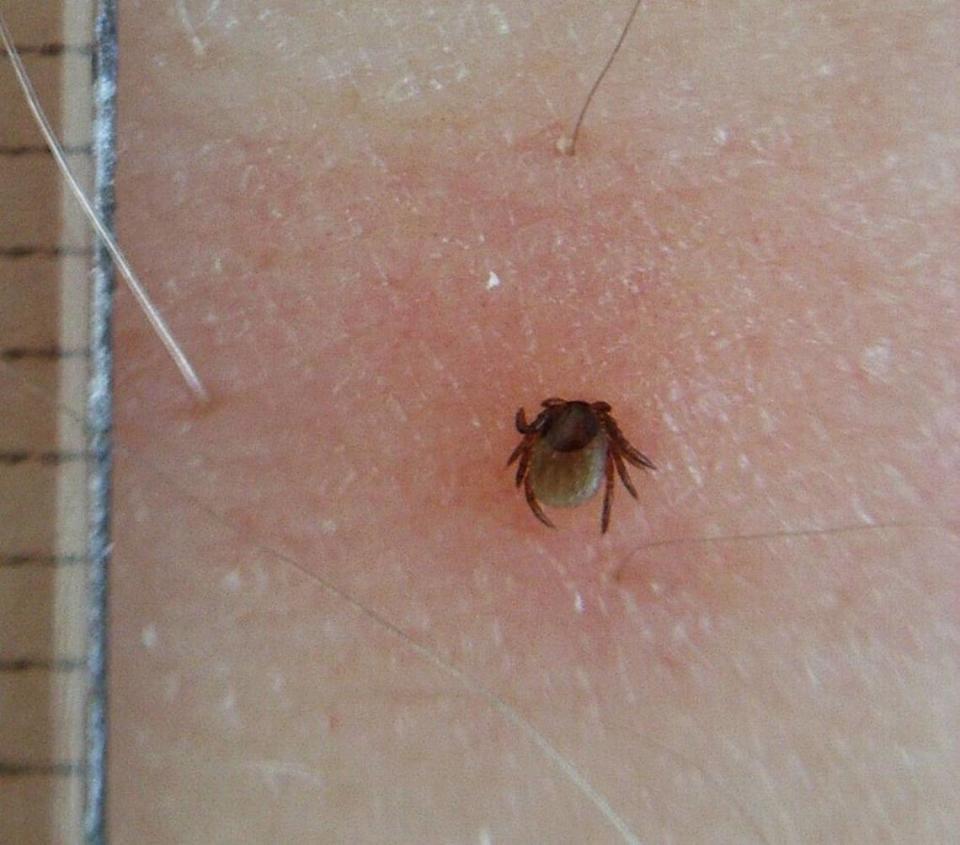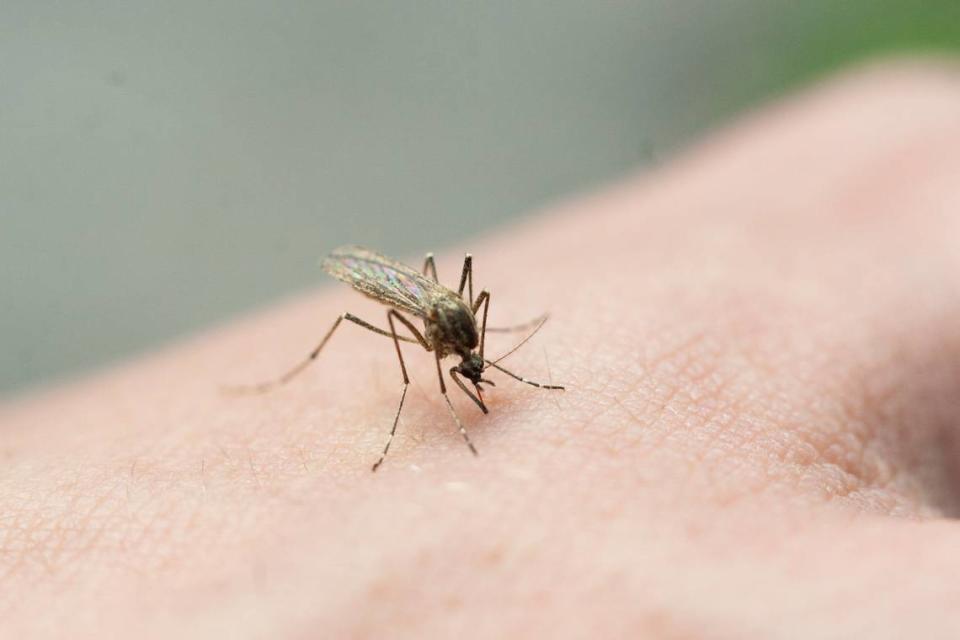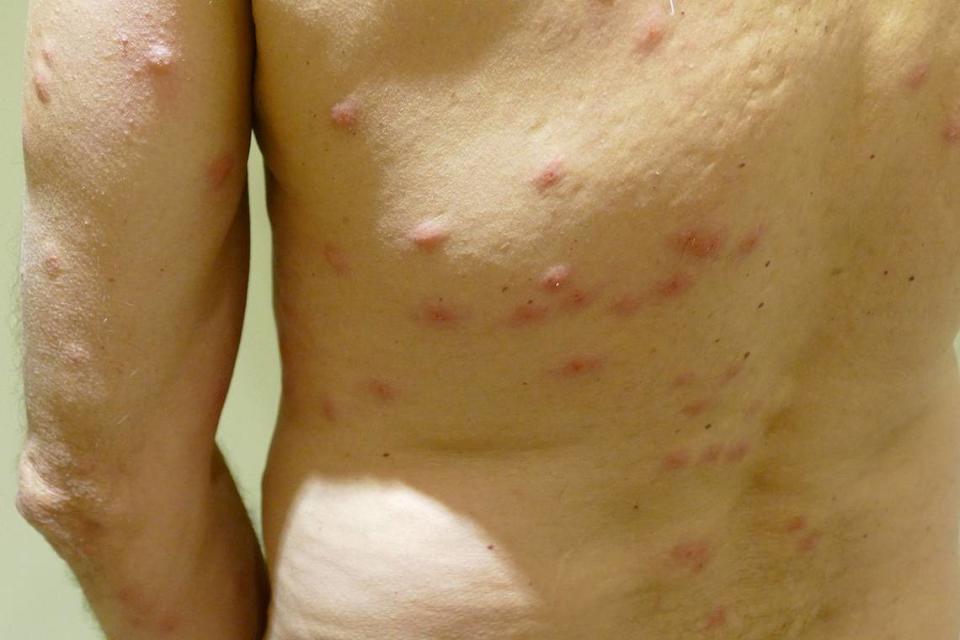Getting eaten alive in PA? Here’s how to distinguish bites from 3 common pests
Although Labor Day has passed and summer is winding down, bug season is still going strong in much of the U.S. If you’ve spent time outdoors in Pennsylvania in recent weeks, you know bug bites are practically inevitable.
Fortunately, though, not all bites are created equal. Some are primarily an itchy nuisance, while others can present a larger threat to your overall health. More often than not, the problem is bug bites tend to offer similar characteristics no matter what caused it — usually some combination of pain, itching, swelling and redness.
Looking close enough — and knowing what to look for — can go a long way in helping you distinguish what bit you and find a treatment plan. To help, here’s a brief rundown of some of the most common biting pests in Pennsylvania, plus information about each and close-up photos for comparison.
Ticks
According to the University of Pittsburgh Medical Center, roughly 25 species of ticks call Pennsylvania home. Though the bites of these parasitic arachnids aren’t usually too painful or itchy, they can transmit diseases.
Here’s a look at three of the most common tick varieties in Pennsylvania:
Dog tick: These ticks are, as you might guess, most commonly found on dogs, although they can feed on other warm-blooded animals, including humans and horses, UPMC says. These ticks, the most common in Pennsylvania, can grow as large as grapes when engorged and are the primary carrier of Rocky Mountain spotted fever, a bacterial disease.
Blacklegged tick: Formerly known as “deer ticks,” these parasites prefer to feed on deer, UPMC reports. Ticks of this species primarily live in wooded, brushy areas and are the primary carrier of Lyme disease, which can become serious if left untreated.
Lone star tick: Though not from Texas, these ticks are commonly identified through the single, star-shaped white spot found on the backs of females, UPMC says. Lone star ticks are commonly found in southern Pennsylvania and prefer to feed on large animals, like deer and humans. They, too, can transmit Rocky Mountain spotted fever.

It’s often easy to know if you were bitten by a tick because, in most cases, it will remain latched on with its head burrowed into the outer layer of your skin. At-home removal is possible, but you must be careful.
When possible, Penn State Extension encourages affected individuals to remove embedded ticks in one piece.
“If an embedded tick is found, remove it with fine tweezers by grasping the head as close to the skin as possible and pulling with steady, firm pressure,” Penn State Extension researchers write. “Do not grab the tick in the middle of its body. Pressure can force gut contents into the skin, increasing the likelihood of infection. The use of matches, chemicals, petroleum jelly, and essential oils is not recommended. These methods will irritate the tick and may cause it to regurgitate its stomach contents, thereby increasing the possibility of infection.”
Once a tick is removed, you might consider sending it to a local laboratory for identification and sampling. Local Penn State Extension offices, for example, offer free identification services for Pennsylvania residents, though samples must be properly prepared before traveling through the mail.
Mosquitoes

Roughly 60 species of mosquitoes call the Keystone State home. Though a few species can spread disease, they are most commonly known for their bites, which result in a raised, itchy bump.
Notably, only female mosquitoes bite, as they use blood to help produce their eggs, UPMC writes. These bugs are most active between dusk and dawn and lay their eggs in areas near stagnant water.
Pennsylvania’s most common species is the northern house mosquito, which can carry West Nile virus, the leading cause of mosquito-borne disease in the continental U.S., the federal Centers for Disease Control and Prevention reports. Most people infected with West Nile virus do not feel sick, but about 1 in 150 infected people develop a serious, sometimes fatal illness, the CDC says.
West Nile virus poses little serious threat to most Pennsylvanians except those with compromised immune systems, Penn State Extension reports. You can reduce the risk of exposure to mosquitoes by using insect repellent, eliminating stagnant water around your home and limiting outdoor recreation to daytime hours.
Bed bugs
These parasitic insects are known to feed solely on the blood of people and animals, primarily while they sleep. Though they are not known to spread disease, bed bugs can cause chaos in your home and, through their bites, produce itching and trouble sleeping.

Bed bugs are generally about the size of an apple seed and have flat, brownish-red in color oval-shaped bodies, the Pennsylvania Department of Health says. They often hide in the cracks of furniture, floors or walls and can travel more than 100 feet in a single night, though they tend to stay within a few feet of where people sleep. Notably, their presence is not associated with cleanliness or a lack of cleanliness.
Bed bug bites are initially painless but, in a few days’ time, usually turn into itchy welts that may appear in a straight line or a random orientation. Additionally, you can identify a bed bug infestation by examining the folds of your mattress and sheets, looking for rusty-colored blood spots on your mattress and furniture and monitoring for a sweet, musty odor, the commonwealth’s DOH warns.
People bitten by bed bugs are encouraged to avoid scratching affected areas and instead apply antiseptic creams or lotions or take an antihistamine. You will likely need to contact your landlord or a professional pest control company to treat the infestation at its source, the state health agency advises.
Treating bites and stings
While many more insects and arachnids can bite or sting besides ticks, bed bugs and mosquitoes, you can treat most bites with the same general tips.
Here’s a brief overview of some guidelines for treating bites and stings, according to UPMC:
Wash affected areas with soap and water. This can keep wound sites clean, remove venom that might be left on skin and prevent dirt from entering open wounds and causing infections.
Apply a cold compress or ice pack for about 10 minutes at a time to help reduce pain and swelling. Be sure to wrap ice packs in a clean cloth to prevent skin damage. Consider removing jewelry or tight-fitting clothing that could become even tighter due to potential swelling, and elevate affected areas if possible.
Apply an antihistamine lotion or a paste of baking soda and water, both of which can help relieve discomfort, pain and itching. Calamine lotion can also work. Before taking antihistamine medications, consider speaking to a medical professional.
Symptoms from bug bites may last only a few hours or up to a week. Seek medical attention if your symptoms don’t subside or if you develop an infection at the wound site or symptoms of an insect-borne sickness or allergic reaction, UPMC advises.
Recognizing allergic reactions to bites and stings
While most insect and arachnid bites are not medically significant, they can become life-threatening ailments if you are allergic. Each year, severe anaphylactic reactions — or those prompted by allergies — cause up to 100 deaths across the U.S.
According to UPMC, common symptoms of anaphylaxis include:
Itchy rashes or hives
Nausea, diarrhea or stomach cramps
Chest tightening and shortness of breath
Dizziness, feeling lightheaded and confusion
Coughing, wheezing or full feeling in the mouth or throat
Swelling of lips, tongue, eyelids, ears and hands or feet
Symptoms of toxic reactions are similar to anaphylaxis, but may also include muscle spasms, headaches, rapid swelling at bite sites, fainting, fatigue or drowsiness. Infection symptoms, meanwhile, may include fever, drainage of pus, worsening warmth, pain and swelling or red streaks leading away from bite sites.
Be sure to seek medical care if you suspect you have contracted an insect-borne illness, including Lyme disease. Symptoms of these illnesses may include fever, rash, chills, joint stiffness, aches and pains and headaches.

